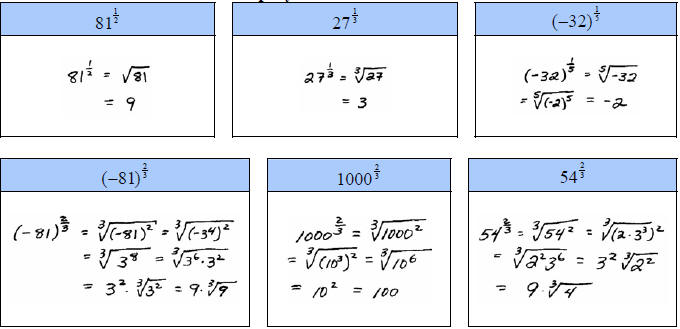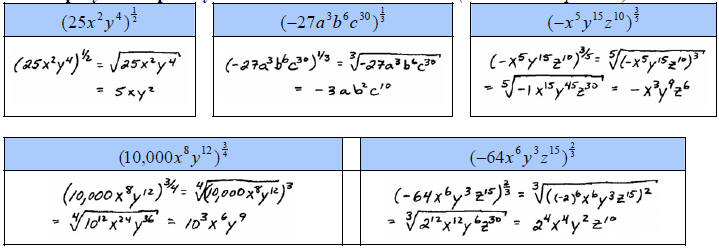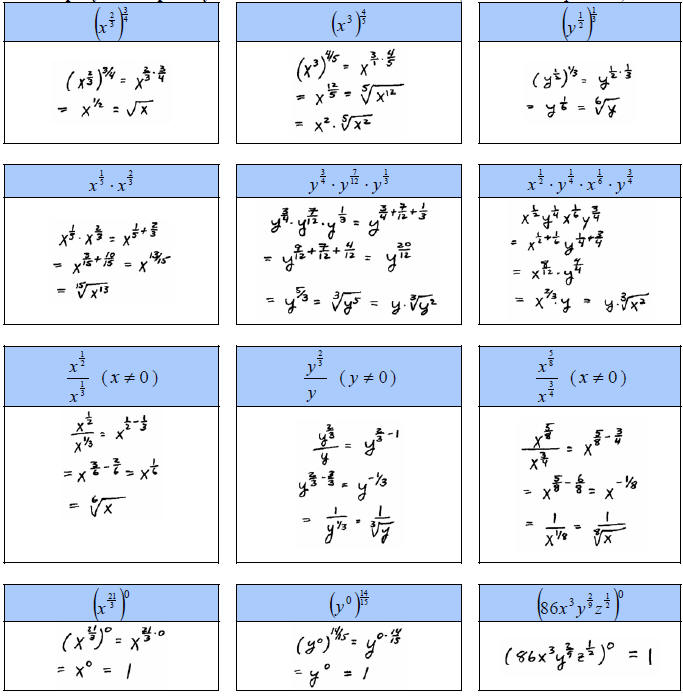Rational Exponents
Rational, or fractional exponents, indicate that we have a
radical expression. They are
intimidating at first but we should quickly get used to working with them.
Basically, the
denominator is the root and the numerator is the exponent.
| Rational Exponents – For any real number a
and integer m and n > 1,
|
A. Rewrite the radical expression using rational exponents.

The above instructions did not ask to simplify, just
rewrite using rational exponents.
B. Convert to a radical then simplify.

When variables are involved, many texts will say that all
of them are assumed to be
positive to avoid the principal nth root problem and absolute values. We can do
the
following types of problems in a number of ways.

Often simplifying using the rules of exponents first is
the easiest method but sometimes
converting to a radical first can simplify
things, both methods yield the same result.
C. Simplify and express your answer in radical notation. (variables are
positive)

Notice that in the above problems they all worked out
nicely because the exponents were
multiples of the root. This is not always the
case as illustrated below.

Tip: A quick way to simplify radicals is to divide the
root into the exponents. This will
tell us what the exponent of the base should
be outside the radical and the remainder will
be the exponent of the base inside
the radical.
All the rules of exponents hold true when working with
rational exponents. For example,
when multiplying we add exponents, but the
exponents in this section are fractions.
D. Simplify and express your answer in radical notation. (variables are
positive)

Sometimes we will be asked to multiply radicals with
different roots but the arguments
will have the same base. This may seem
impossible at first but it can be done as follows:




